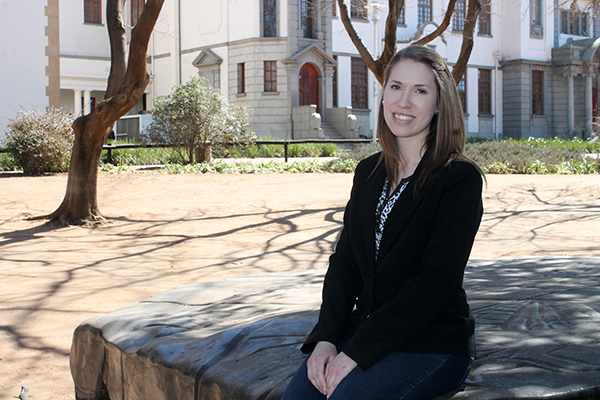Latest News Archive
Please select Category, Year, and then Month to display items
11 March 2021
|
Story Rulanzen Martin
|
Photo Courtesy of the artists
![]()
The annual final-year Fine Arts graduate exhibition promises to once again entice even the biggest of art enthusiasts. The exhibition, which runs until 1 April 2021, highlights the artworks/projects of final-year students in the Department of Fine Arts.
 Louiza Combrinck, World-building, Digital print, 84 x 49 cm. Image courtesy of the artist.
Louiza Combrinck, World-building, Digital print, 84 x 49 cm. Image courtesy of the artist.
 Final-year graduate exhibition at the Johannes Stegmann gallery
Final-year graduate exhibition at the Johannes Stegmann gallery
 Monique Myburgh, Digital Atoll I, Digital drawing, 70 x 100 cm. Image courtesy of the artist.
Monique Myburgh, Digital Atoll I, Digital drawing, 70 x 100 cm. Image courtesy of the artist.
 Elizabeth Bosch, Blau Macht mich Traurig, Oil on wood, 80 x 62.5 cm. Image courtesy of the artist.
Elizabeth Bosch, Blau Macht mich Traurig, Oil on wood, 80 x 62.5 cm. Image courtesy of the artist.
 Shenique Roux, Perplexed Recollection, Digital print, 40 x 100 cm. Image courtesy of the artist.
Shenique Roux, Perplexed Recollection, Digital print, 40 x 100 cm. Image courtesy of the artist.
Humour a powerful tool to address serious issues
2017-12-06

Michelle Malan received a Dean’s medal from the Faculty of Humanities at the mid-year
graduation ceremonies for her Master’s degree.
Photo: Jóhann Thormählen
People, in most contexts, are more open to engage in serious issues such as politics and economics if it is presented in a humorous way. This makes humour a very powerful tool to address burning issues in our society.
These are some of the findings in the research of Michelle Malan, a part time lecturer in the Department of Linguistics and Language Practice at the University of the Free State (UFS).
How comedians and cartoonists use humour
The basic premise of her research, titled The Intersemiotic Translation of Humour, was to see how comedians and cartoonists take news stories and translate it into humour. She received the Dean’s medal for the best Master’s degree in the Faculty of the Humanities at the mid-year graduation ceremonies in June 2017.
“More specifically, I explored how the medium constrains potential meaning-making in cases of intersemiotic translation in which humour is constructed,” she says.
Cartoon vs a comic television show
According to her the medium in which a message is given, in this case comedy, definitely influences how one is able to form meaning from it. “For instance, a cartoon (visual medium) would have a different meaning-making potential than a comic television show.”
She also notes that one must understand the workings of humour, which includes the mediums in which it is presented, so that the intended humour does not do more harm than good.